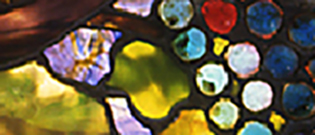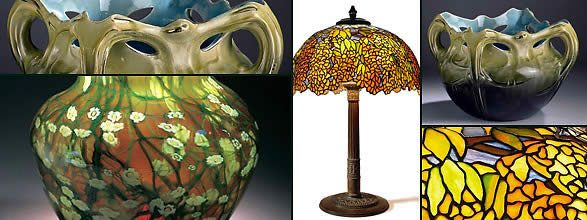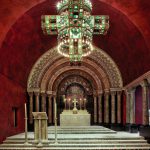
Ongoing
The celebrated chapel interior that Louis Comfort Tiffany created for exhibition at the 1893 World’s Columbian Exposition in Chicago opened as an exhibition at the Morse in April 1999, becoming available to the public for the first time in more than 100 years. The mosaic and glass masterpiece, a testament to his design genius, established Tiffany’s reputation internationally.
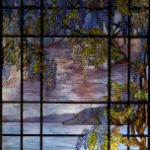
Ongoing
View of Oyster Bay is a beloved example of Louis Comfort Tiffany’s artistry in leaded glass. In 1978, Morse Museum founders Jeannette Genius (1909–89) and Hugh F. McKean (1908–95) loaned View of Oyster Bay to The Metropolitan Museum of Art in New York City (The Met). For decades, The Met’s visitors have enjoyed the window in the American Wing’s Engelhard Court. Through summer 2025, while The Met reinstalls the Court, Morse visitors will have an opportunity to see the window on view in Revival & Reform: Eclecticism in the Nineteenth-Century Environment.

Ongoing
World’s fairs were an international tradition intended to celebrate the industrial and cultural achievements of various nations. Throughout the 19th and 20th centuries, visitors to these exhibitions were treated to magnificent presentations of art, science, manufacturing, and more. This vignette takes the form of a turn-of-the-century world’s fair display, including glass, art pottery, and furniture, as well as world’s fair ephemera from the Morse’s collection.

Ongoing
Before the advent of emails, text messages, and other forms of digital correspondence, the letter was the primary form of written communication. Arts and Letters explores the art of letter writing, and the ways in which Americans of the 19th and 20th centuries used the written word for both communication and creative expression. This exhibition brings together a diverse group of objects and archival materials, including paintings like William Paxton’s The Letter, writing instruments, and letters.
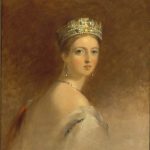
Ongoing
This exhibition explores the rich aesthetic landscape of Victorian America. In the 19th century, the young republic of the United States followed Great Britain’s imperial and industrial example and eagerly pursued the romantic trends sparked by her young queen. The reckonings of youth, industry, expansion, and war kindled forms of visual expression in American culture—innocence, nostalgia, mourning, revivalism, and more. Far from its stilted and chaste stereotypes, the Victorian era featured a wide range of styles that emerged from a dynamic environment, one in which modes of personal and artistic expression were transformed on both sides of the Atlantic.
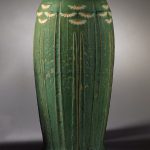
Ongoing
This exhibition focuses on the variety of materials created within the Arts & Crafts genre that helped to create uniform and warm environments. Distinctive furniture, metalwork, and design created during the turn of last century is on view alongside a selection of Grueby Pottery (1897–1913), including a pairing of a Grueby lamp base with a Tiffany Studios (1902–32) leaded-glass lamp shade.

Ongoing
The new installation of Lamps and Lighting—Tiffany and His Contemporaries showcases some of Tiffany’s most innovative designs for lamps and sets a context for their production and design.
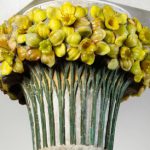
Ongoing
This comprehensive exhibition on Louis Comfort Tiffany’s celebrated Long Island home, Laurelton Hall, features the restored Daffodil Terrace and approximately 200 objects from or related to the estate.

Ongoing
Reflecting on his artistic career at a celebration of his 68th birthday in 1916, Louis Comfort Tiffany characterized his work across various media as a lifelong “quest of beauty.” Few artists have been as energetic or as successful as was Tiffany (1848–1933) in establishing that aesthetic ideal in the American home. Louis Comfort Tiffany’s Life and Art examines through art objects, archival documents, and artifacts Tiffany’s astonishingly diverse work in the decorative arts over the course of his lifetime.

Ongoing
A newly acquired c. 1885 Tiffany iron fireplace hood from Laurelton Hall, Louis Comfort Tiffany’s celebrated Long Island home, enriches the Museum’s Laurelton Hall galleries that contain the largest repository of art and architectural objects from Tiffany’s legendary estate. Thought to be lost to the fire that consumed much of the estate in 1957, the fireplace hood was one of his most cherished objects. The hood was originally designed, fabricated, and installed at Tiffany’s Seventy-Second Street house in New York City. Around 1919, he had the fireplace hood removed and brought to Laurelton Hall. The Morse Museum’s installation of the massive fireplace hood, measuring over 66 inches tall and 55 inches wide, recalls its original setting in New York City.

Ongoing
This exhibition provides a comprehensive look into the rare pottery of Louis Comfort Tiffany (1848–1933). Largely produced between 1900 and 1915, Tiffany’s art pottery was encouraged by the 1900 Paris Exposition Universelle and the reverberations of the Centennial International Exhibition of 1876 and ultimately defined by the artist’s never-ending experimentation. Complex glazing and unconventional forms distinguished Tiffany’s creations from the stylish pottery of the time. Only 2,000 pieces are thought to have been produced by Tiffany, and even fewer survive today. The Museum’s collection is the largest public collection of Tiffany pottery anywhere.

Ongoing
During the second half of the nineteenth century, iridescence—the optical light phenomenon natural to seashells, butterfly wings, and peacock feathers—captured the interest of glassmakers and potters in both Europe and America. The enthusiasm for mimicking these color-changing effects followed exciting discoveries of antique glass that had become iridescent after centuries of burial within mineral-rich soils. The premier decorative art studios of the West, notably Louis Comfort Tiffany’s firm in the United States and Glasfabrik Johann Loetz Witwe in Europe, developed chemical techniques to reproduce iridescent rainbow colors on par with nature. In this exhibition, the Museum celebrates iridescence through diverse examples from these and other companies of the era represented in its collection.

Ongoing
Art Nouveau—French for “new art”—arose almost simultaneously in Paris, London, Vienna, Munich, Milan, and Barcelona. Horrified by the cheap mass-produced goods typical of industrial production in the nineteenth century, artists set out not only to improve design but to make it modern. Stylistically Art Nouveau varied by region. Though the objects could include strong straight-line geometry, Art Nouveau was dominated by elegant curves and counter-curves, asymmetrical composition, and sinuous, sensuous line. Its focus was on nature generally and the female face and form particularly. This exhibition, assembled entirely from the Museum’s collection, includes fine examples of Art Nouveau from the hands and hearts of artists, designers, and artisans from Europe and America.

Ongoing
Tiffany Studios was arguably the most accomplished maker of art glass in the world in its day and undoubtedly one of the best of all time. In this new installation, the Morse presents examples of Tiffany art glass that richly illustrate the artist’s mastery of this medium.
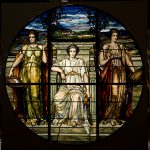
Ongoing
The Arts window, c. 1894, by J. & R. Lamb Studios is the centerpiece of this major new exhibition that illustrates the rich diversity of styles that made up the visual environment of the late 19th century in both Europe and America. Lamb Studios, a prominent American glasshouse of the era, exhibited the neoclassical window widely. In preparation for its debut at the Morse, the window, more than eight feet in diameter, underwent extensive conservation. The installation, organized from objects in the Museum’s collection, features about 20 additional leaded-glass windows and selections of art glass, pottery, and furniture, a number of which also have never been exhibited. Besides works by Lamb, windows on view—some avant-garde, others reviving styles of the past—include examples by Tiffany Studios, John LaFarge, Frank Lloyd Wright, Edward Burne-Jones, Donald MacDonald, and Heaton, Butler & Bayne.

Ongoing
Through photographs, models, tools, and art objects, this teaching exhibit shows the range of Louis Comfort Tiffany’s glass production, from mosaics and molded-glass jewels to leaded-glass windows and lamps, providing insights into the techniques employed by his artisans.

Ongoing
This permanent gallery features about three dozen objects, including eleven pieces of jewelry that Tiffany designed for the new art jewelry division he established at Tiffany & Co. after his father died in 1902.


